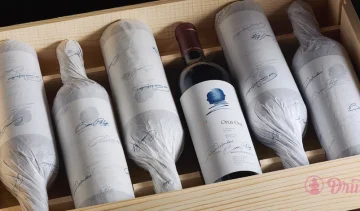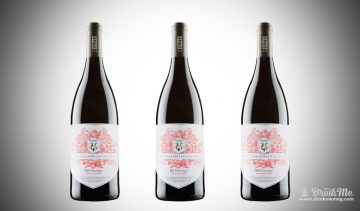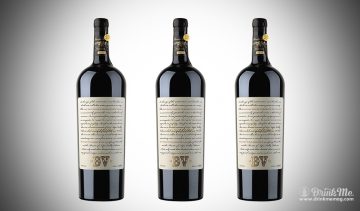The young Sommeliers who are working the back of the house bring out our second flight of wines – glasses of Sauvignon Blanc. Each judge gets seven coded glasses: seven new wines to swirl, sniff, sip, spit, and score. Number 602-29. Silver? No, its grapefruit aroma and crisp acidity balancing the full fruit make it Gold. After tasting all seven wines, we judges discuss each one and give our scores for each. Scores are tallied and averaged, and 602-29 receives three Gold votes, a Silver, and a Bronze. It gets a Gold Medal.
Most wines don’t fare so well. Our panel, one of 15, is bickering over another wine. This flight is all Sauvignon Blanc from Chile. Some of the judges are put off by the green, grassy notes in one of them. Others argue that this is an acceptable style of cool climate SB — more the New Zealand style – but different from many of the other Chilean SB that are showing pineapple and pear. We take another tally, and one of the doubting judges relents and comes up a few points. The wine gets a Bronze.
I have been judging wine competitions for about ten years. I can’t even guess how many wines I have scored, but it’s easily in the high hundreds, maybe thousands. Each year, it seems there are more wines entered and more judges enlisted to assess them.
And if it seems there are many more wine competitions than there used to be, you are right. While no one really knows how many, the number has grown rapidly in the past five years. And in many cases, over half of entrants are getting medals.
At the same time, the 10 to12 most respected international wine competitions in the US and UK have similarly seen an increase in the number of wines entered each year. Some of the best are the International Wine and Spirit Competition, the Decanter World Wine Awards (the largest with over 14,000 entries), the International Wine Challenge (UK), California State Fair Competition (the oldest in the U.S.), San Francisco International, San Diego International, the Ultimate Wine Challenge, the Finger Lakes International, the Dallas Morning News/TexSom competition, Sunset Magazine, and Europe’s series of Concours Mondial events.
Given this growing vat of wine competitions, what is the value for the consumer and the winery?
I’m happy to say there is! I once read that picking a wine from a wine list is almost as stressful for the majority of people as making a public speech. So, buying a medal-winning wine offers some assurance that the wine was chosen by a group of unbiased professionals. Unbiased because the wines are tasted “blind” so no one knows what specific wines they are.
A medal can be of great value to a winery, otherwise they wouldn’t be paying $100 or more per wine to enter. Getting a medal can translate into higher wine sales, since the medal is usually mentioned in press releases and shown on the winery website. Some competitions provide paste-on “winner” labels for the bottles.
Judges and Judging
While there are broad differences among tasters, one key to a good judge is a wide range of experience and the analytical ability to ignore personal likes and dislikes. When you are judging, you are mentally comparing the wine in front of you to other examples of that type of wine. You may not like white Zinfandel, but if you are judging them, you need to put that dislike aside and decide how successful that white Zin is.
Another key quality is consistency. If a judge awards a Sauvignon Blanc 95 points in one round, she should not score the same wine at 85 points in a later round.
Differences in judges’ tasting rulers can relate to where they live – there is a divide between East Coast and West Coast judges, with West Coast tending to favor somewhat fruitier, concentrated wines, while Easterners tend to go for drier, less fruity wines. This is, of course, a general statement and there are exceptions.
Another difference is between people who are wine makers or vineyard owners and those who are sommeliers, retailers, or writers. The winery folks tend to focus on the technical qualities of the wine, whereas the consumer-focused people are looking for a good bottle for their customers to consume.
The Stamina
Wine judges can comfortably evaluate 50 to 70 wines per day providing that the number of wines in each flight is limited, the wine is at the proper temperature, and in appropriate glassware.
Temperature is important particularly for white wines – too hot and they will seem dull; too cold and the flavors and aromas will be subdued. Glassware can have a major impact on the taste of a wine. Tasting a wine in a water glass or a sparkling wine in a saucer glass changes what you perceive. Many competitions use Riedel tasting glasses and flutes for sparkling wines.
Some competitions require judges to sample way too many wines per day and that leads to palate fatigue and inaccuracy.
Of course, there is no swallowing – when you taste 50 or more wines a day, the last thing you want to do is swallow any. Even without swallowing, alcohol gets absorbed into your system. Bread and water are at each judge’s place, and lunch is a chance to line the stomach before the relentless parade of wines resumes.
Red wines are opened usually half an hour before actual tasting, while whites and roses are opened just before the flight is presented to the judges. How many “bad” bottles” on average? Typically only 2-3% are found to be “corked” (musty cardboard) or “off.” It is here that a judge’s experience can be very important. Recognizing that the Sauvignon Blanc you have just tasted does not conform to expectations will trigger the opening of a second bottle and perhaps save a producer from a low score.
The panel may be as few as two or up to five or even six tasters. One competition I judged had eight on each panel. Of course, the more folks on the panel, the less discussion – not everyone can be heard in the one or two minutes allowed for each wine.
So, what’s in it for the judge, aside from a per diem payment (and not all competitions pay their judges) and a complimentary trip to a cool location? Judging as part of a panel gives you the opportunity to re-calibrate your taste. When a judge on your panel challenges your score or vice-versa, you have a chance to discuss, to see things about the wine you may have missed. It makes you a better judge. And, often I discover a wine that becomes a house favorite.










